How Does Sales Targeting Work? Get the Right Tools and Strategies
Are you looking to increase your sales but don't know where to start? Sales targeting can be a powerful tool to help you reach your goals. According to the 2023 Hubspot Sales Trend Report, the two most influential components a prospect considers when deciding to connect with a salesperson are their needs and budget.
Knowing this, you must understand what sales targeting is and how it works to effectively target potential prospects who have the highest likelihood of converting into paying customers.
In this article, we'll break down what sales targeting is, discuss some strategies for an effective sales team, review some helpful tools and resources available for optimizing sales performance, as well as examine why it’s important for your business.
Whether you’re just starting out or already have an established business model, sales targeting can provide insights into customer behavior that can help drive growth in both the short and long term.
So if you’re serious about increasing your bottom line while building relationships with clients along the way, then read on to learn more about how sales targeting can help you reach your goals.
What Is Sales Targeting?
Sales targeting is a prospecting technique used to identify and reach out to the right prospects with the right message at the right time. It involves researching and analyzing prospects, crafting and delivering targeted sales messages, and establishing relationships with ideal customers.
Sales targeting allows sales reps to maximize their prospecting efforts while minimizing waste; it's an effective tool that provides valuable insights into who a company should be talking to increase conversions and close deals.
By targeting those prospects most likely to purchase, businesses can reduce time spent prospecting, better engage with their core audience, and accelerate sales processes.

The Importance of Sales Targeting
Having a targeted sales strategy is essential for the success of any business, yet 40% of salespeople agree that prospecting is the hardest part. This is because the intricate process of prospect targeting involves carefully segmenting customers into groups based on key characteristics such as interests, purchasing habits, location, and more.
But by doing this, businesses can adjust their approach to meet the needs of each targeted market, leading to greater levels of success for both short- and long-term business objectives. Targeted sales also allow businesses to build relationships with existing customers, re-engage lapsed customers from past campaigns, and track conversions from specific messages.
With targeted sales, businesses can reach deeper levels of customer engagement by offering services specifically tailored to their targeted audiences at different stages in the buying journey.
With targeted sales strategies in place, businesses can better prioritize their goals and resources toward capturing higher-quality leads, ultimately resulting in more efficient use of marketing spend and higher return on investment (ROI).
Use Sales Targeting to Grow Your Business
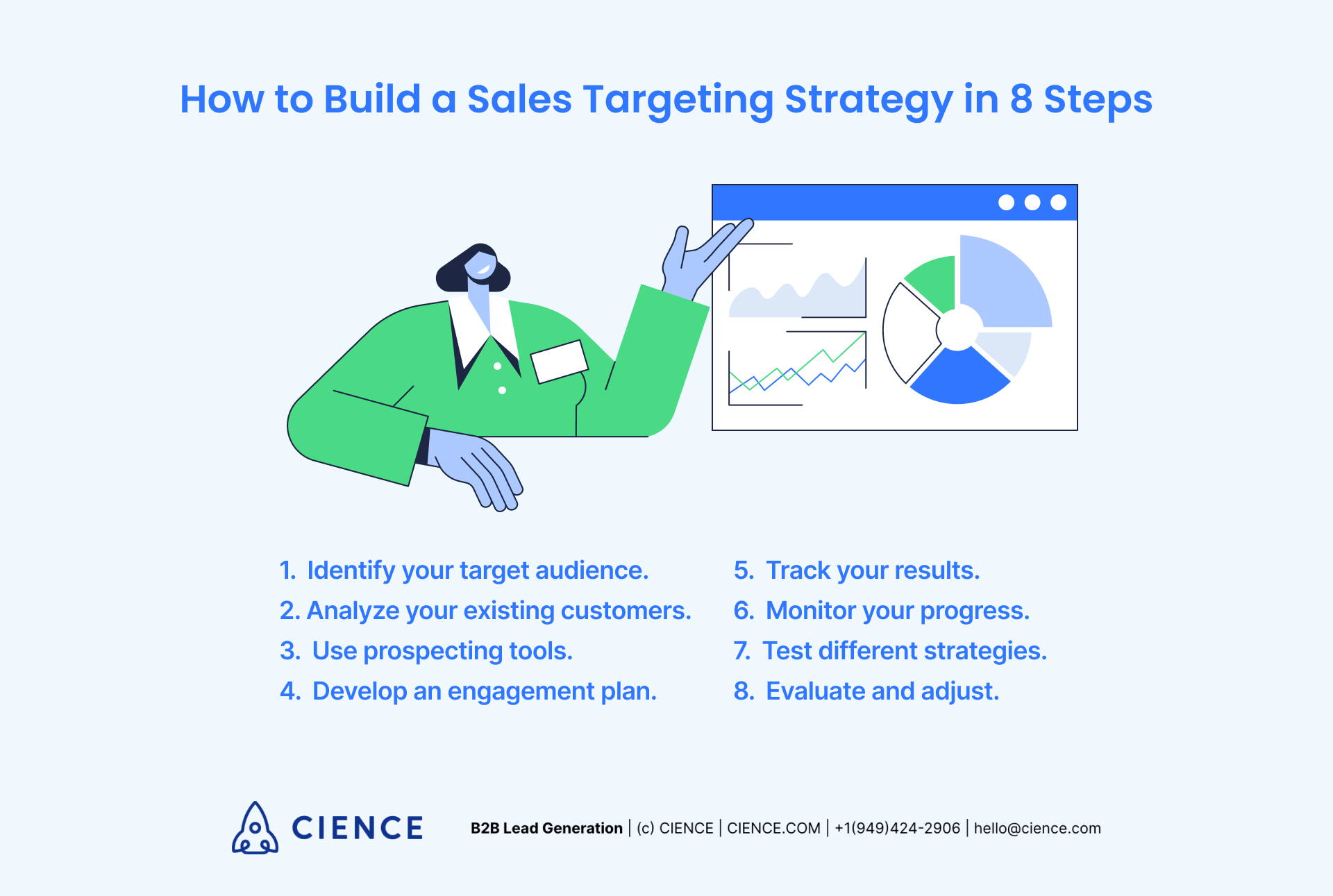
8 Steps to Build a Sales Targeting Strategy
Having a sales targeting strategy is essential for success in the sales industry. It involves setting goals and developing a plan to reach those goals. By following a strategic approach, sales teams can ensure that they’re targeting the right prospects to maximize conversions.
Here are seven steps to get you started on building a sales targeting strategy:
1. Identify your target audience.
Did you know that 50% of prospects are not a good fit for your business? That’s why it is crucial to identify the target audience and what they desire before developing an effective sales strategy.
Knowing your B2B target audience allows sales teams to better understand their goals and create more easily attainable sales targets. By crafting an individualized sales targeting strategy for each particular audience, sales teams can deliver sales presentations, advertising campaigns, and products that are most likely to resonate with this audience.
2. Analyze your existing customers.
Effective prospect targeting is a key component of any efficient sales process. By analyzing the demographics and behaviors of your existing customers, you can gain valuable insight into the type of customers who would be interested in your services.
Having an accurate view of your target customer base allows you to optimize your sales targeting and lead generation strategies that reach larger audiences and drive more qualified leads to your business.
Additionally, by maintaining ongoing analyses of customer data points such as success rate, lifetime value, and purchase frequencies, you'll be able to further refine and improve your prospect targeting methods over time and increase sales performance.
3. Use prospecting tools.
When it comes to building a targeted sales strategy, prospecting tools are an invaluable resource. In fact, 90% of businesses make use of two or more data enrichment tools to gather information about new leads. Finding the right prospects is key to garnering maximum sales results and efficiently reaching your targeted goals.
With these tools, you can take a targeted approach to your sales process by narrowing down a list of targeted prospects who match the criteria of your sales target. Furthermore, they can be used to automate mundane tasks such as email outreach, tracking conversations with potential customers, and identifying why those customers would benefit from doing business with you.
Utilizing prospecting tools streamlines selling processes and allows your team to prioritize leads that have the highest chance for success.
4. Develop an engagement plan.
Developing an engagement plan is integral for sales targeting strategies as it provides a systematic and consistent approach to identifying, connecting with, and converting target customers.
By creating a sales targeting process that aligns sales tactics with customer engagement goals, businesses can better understand their customers’ motivations and find effective ways of communicating the value of their products. This allows sales teams to focus on profitable sales opportunities while centralizing resources around the sales process and tracking performance accurately.
5. Track your results.
Tracking your sales results is essential when it comes to crafting a successful sales targeting strategy. Understanding where sales are coming from, who is buying your product, and what elements of the sales process are successful will enable sales strategies to be fine-tuned and customized to maximize sales efficiency.
Along with tracking sales, it's also crucial to measure the sales and marketing efforts to truly understand the success of a sales targeting strategy. With an understanding of what has worked and what hasn't, businesses can make reliable decisions on how best to continue their sales targeting techniques.
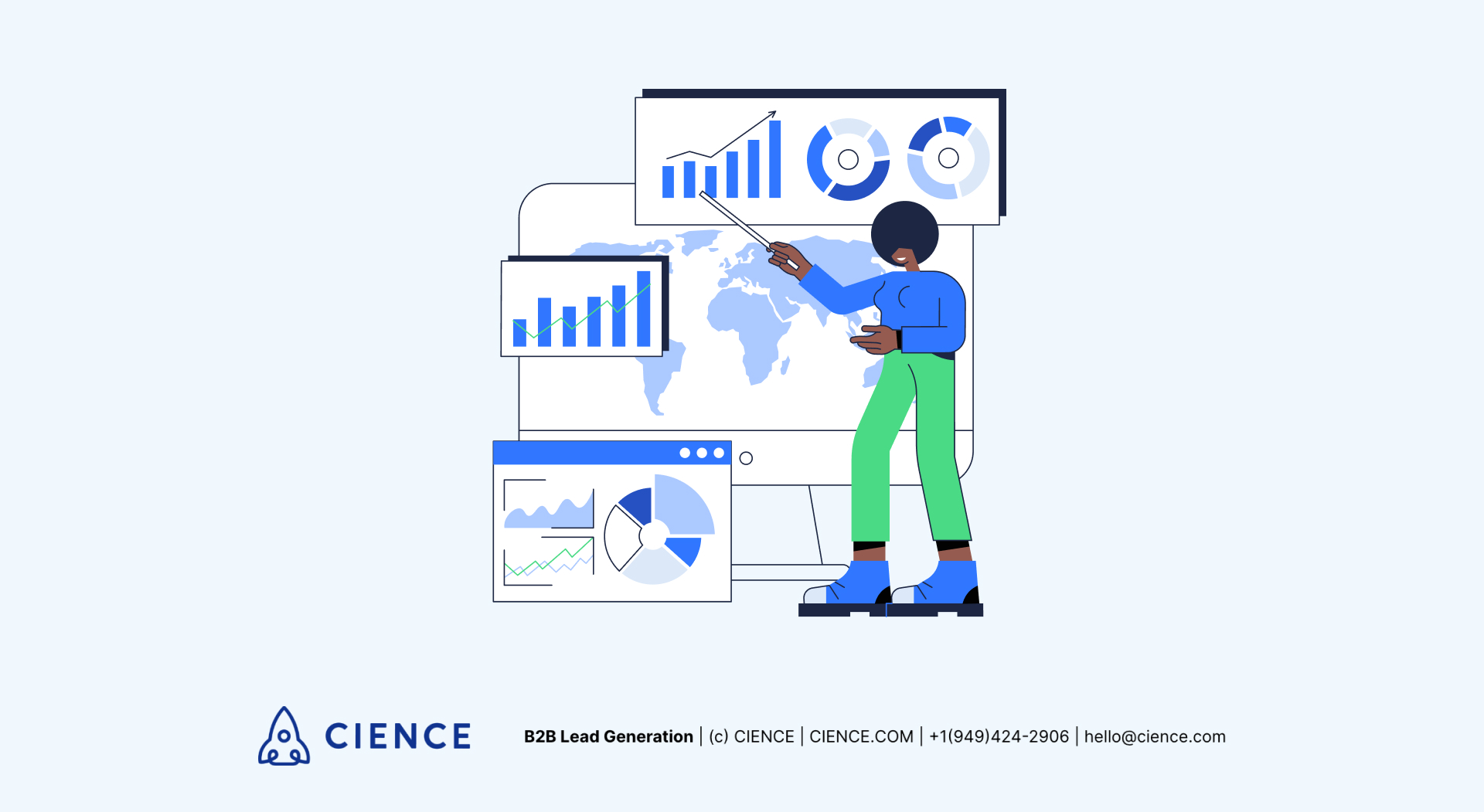
6. Monitor your progress.
When targeting sales prospects, it is essential to monitor progress to build an effective sales targeting strategy. This involves tracking the efforts you’ve taken, such as:
- Marketing and social media campaigns
- Programmatic advertising spend
- The results those efforts have yielded
Having a clear idea of which strategies are working and which are not will help plan future tasks by targeting areas that bring good results while overlooking or separating less successful activities.
By paying attention to progress, you can make small changes early on in your sales targeting strategy, allowing for large improvements throughout the entire process.
Additionally, monitoring progress will give stakeholders an idea of how their decisions are helping with the ultimate goal of increased sales prospects. Ultimately, observing and monitoring progress is an important part of creating a successful targeting sales strategy.
7. Test different strategies.
Testing different approaches allows companies to determine which strategies are the most effective in landing future sales and ultimately help create the most successful prospect-targeting solutions tailored specifically to each business’s individual needs.
Conducting tests on different marketing strategies provide companies with invaluable insights concerning how their consumers respond, making findings based on metrics obtained from these tests essential to establishing an efficient prospect-targeting approach.
8. Evaluate and adjust.
Evaluating and adjusting is an integral part of building a successful sales targeting strategy. By analyzing prospect targeting (demographic data) and tracking customer interactions, companies can accurately narrow their prospect target list to the ideal customers who can benefit from their offerings.
Adjustments can then be made to the prospect targeting efforts based on these initial assessments. Additionally, it is essential to make changes to any sales pipeline by analyzing initial successes or failures throughout the process.
Doing so will help engage customers more efficiently and effectively, ensuring that marketing and promotional efforts are efficient within the business's budget and time frame.
Build Sales Targeting Strategies with CIENCE
6 Best Sales Targeting Tools
Targeting the right demographic for sales can be made easier—and more successful— with the help of smart targeting tools. Here are some of the best sales targeting tools:
1. CIENCE GO Data
CIENCE GO Data provides businesses of any size with a comprehensive lead prospecting tool that offers real-time access to over 300 million validated, enriched records. With constantly updated data and no pay-per-record system required, CIENCE GO Data enables you to identify the right leads quickly and confidently.
- Pricing: By request
- Free trial: Available
- CRM integration: Available
- Browser extension: Not available
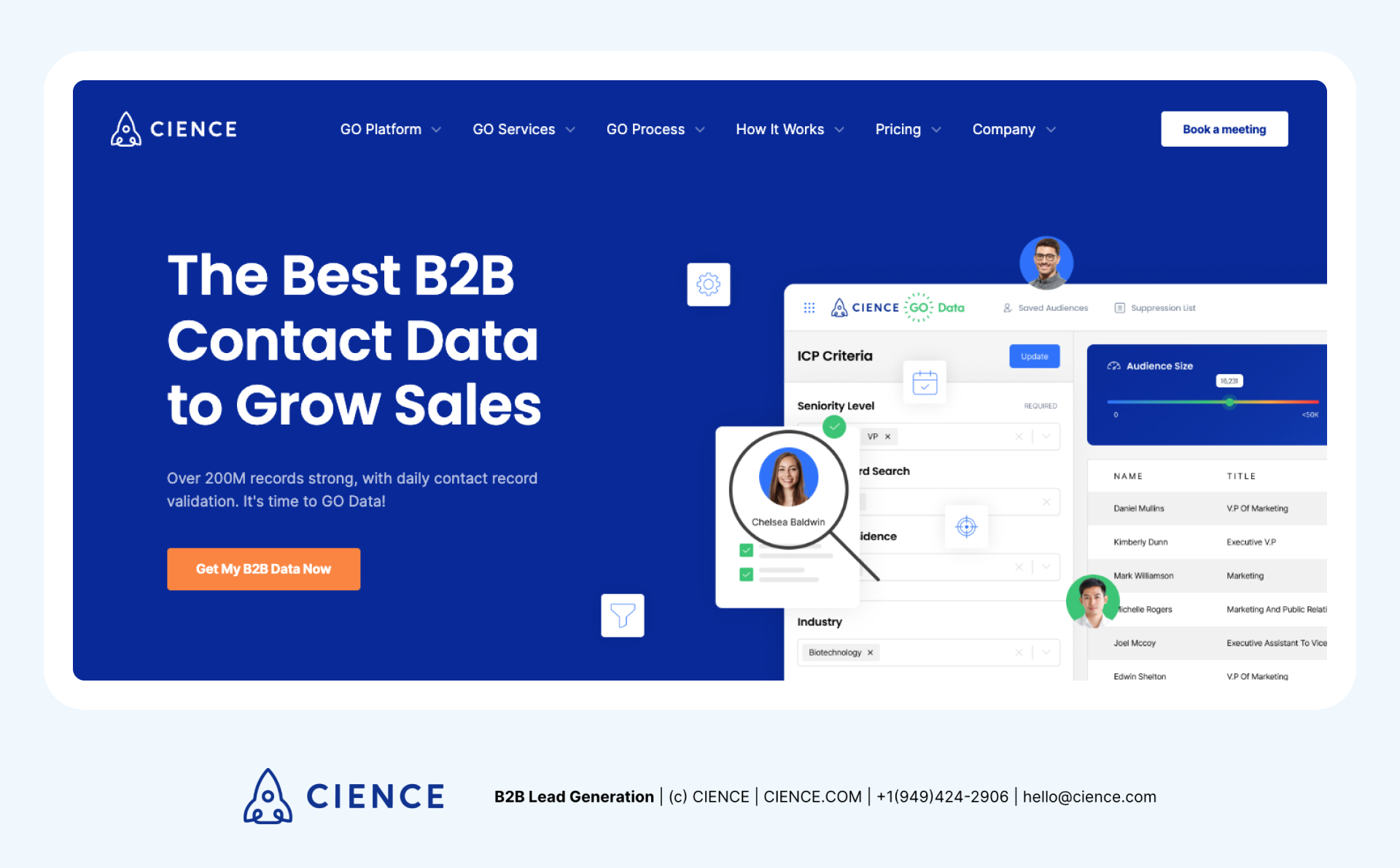
2. CIENCE GO Show
CIENCE GO Show provides the power to easily identify anonymous website visitors and filter out any bots or ISP traffic. The platform can segment audience behavior and demographics with ease, while swiftly acquiring leads ready for prospecting—all of which pair seamlessly with other CIENCE GO Data tools to craft an ever-evolving comprehensive marketing strategy.
- Pricing: By request
- Free trial: Available
- CRM integration: Available
- Browser extension: Not available
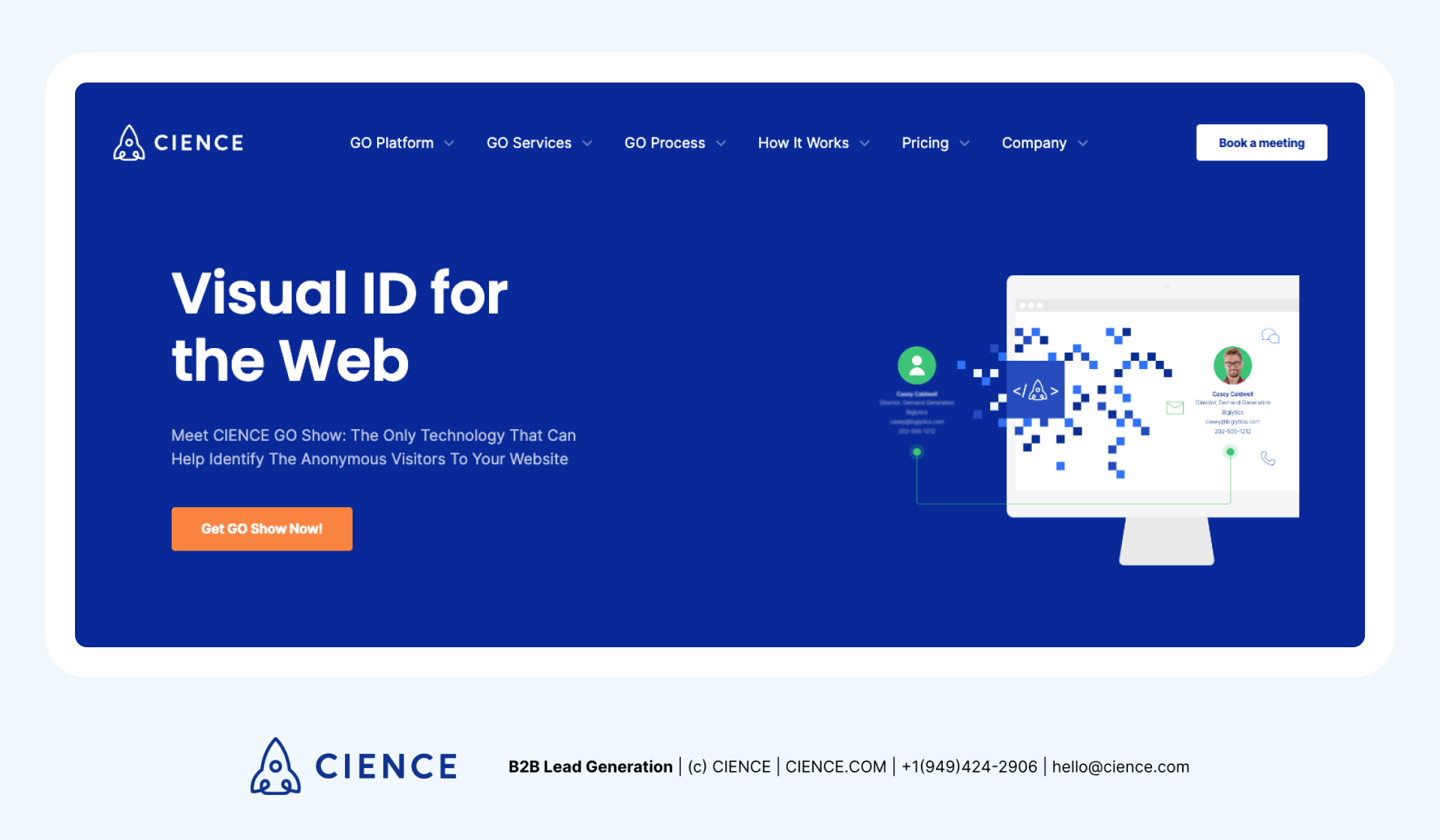
3. LinkedIn Sales Navigator
As a powerful professional network, LinkedIn Sales Navigator is an essential sales lead-building tool. The Premium profile grants access to locate prospects and monitor their activities with ease, enabling representatives to approach customers directly through direct messaging or emailing effectively.
- Pricing: $79.99 to $125 per user per month
- Free trial: Available
- CRM integration: Available
- Browser extension: Available
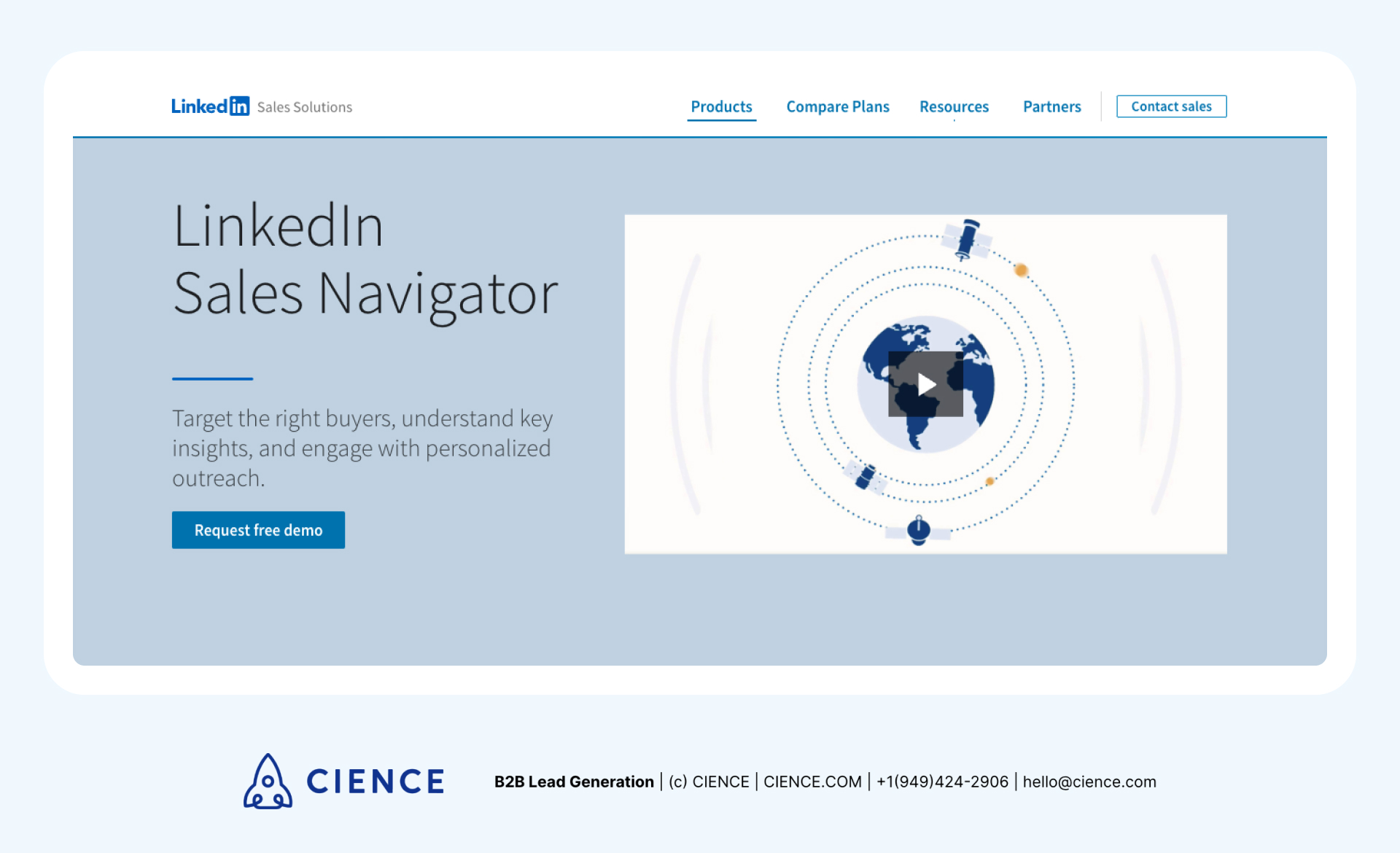
4. Salesfully
Salesfully gives businesses an edge with its subscription-based lead generation platform. With a flat monthly rate, users can take advantage of unlimited sales leads preloaded in the comprehensive database. The data points for each contact ensure small business owners have all the resources to create tailored lists based on specific objectives and target audiences—giving them ultimate control over boosting success.
- Pricing: $29 per month
- Free trial: Available
- CRM integration: Not available
- Browser extension: Available
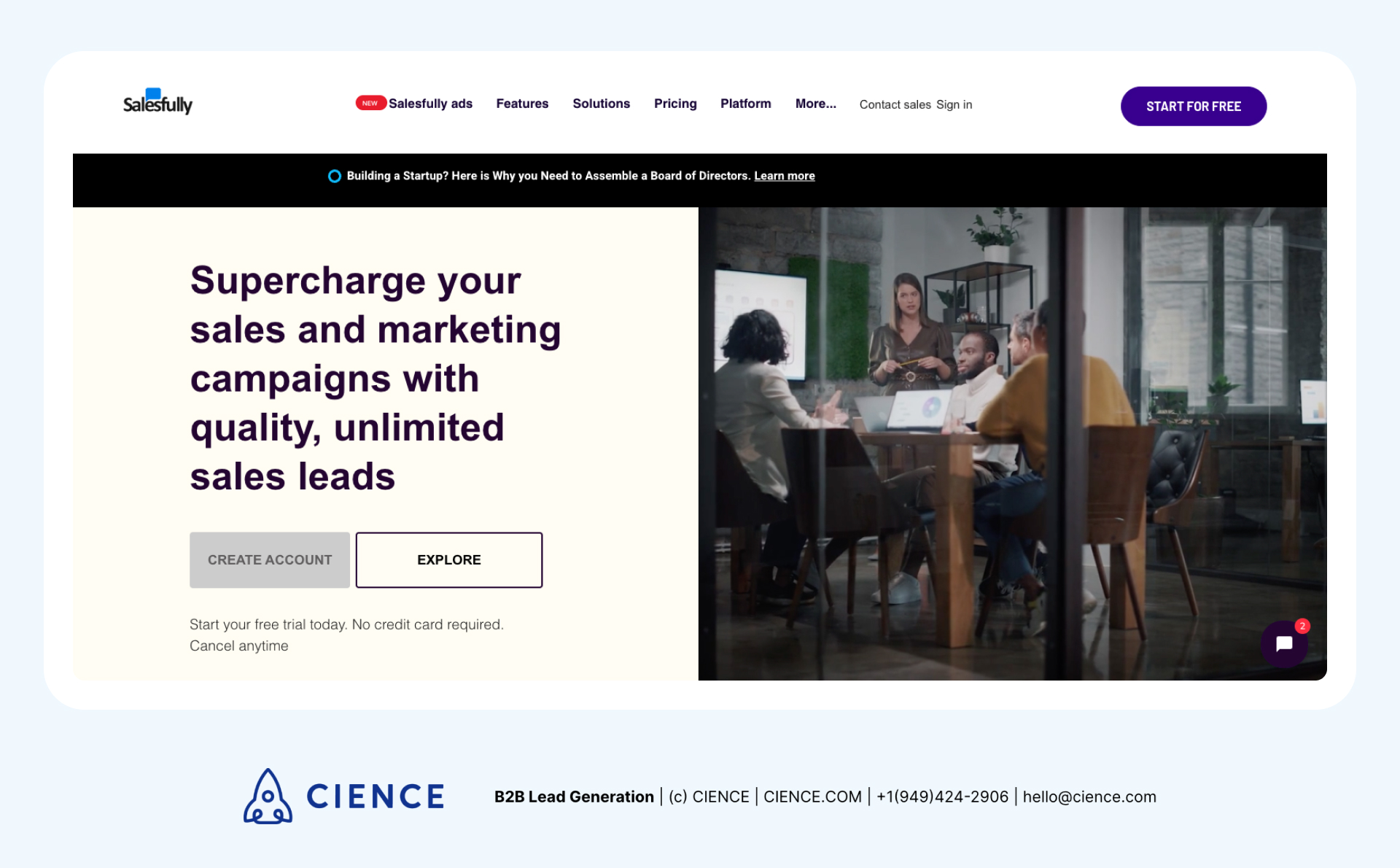
5. Hunter.io
Hunter is a robust tool to help you pinpoint the right people at any company. It can generate custom lead lists and verify contact info in seconds while also revealing the source and date of email discovery.
Find prospects easily using its advanced search filters—a simple solution for businesses looking to build successful relationships through digital outreach.
- Pricing: By request
- Free trial: Available
- CRM integration: Available
- Browser extension: Available
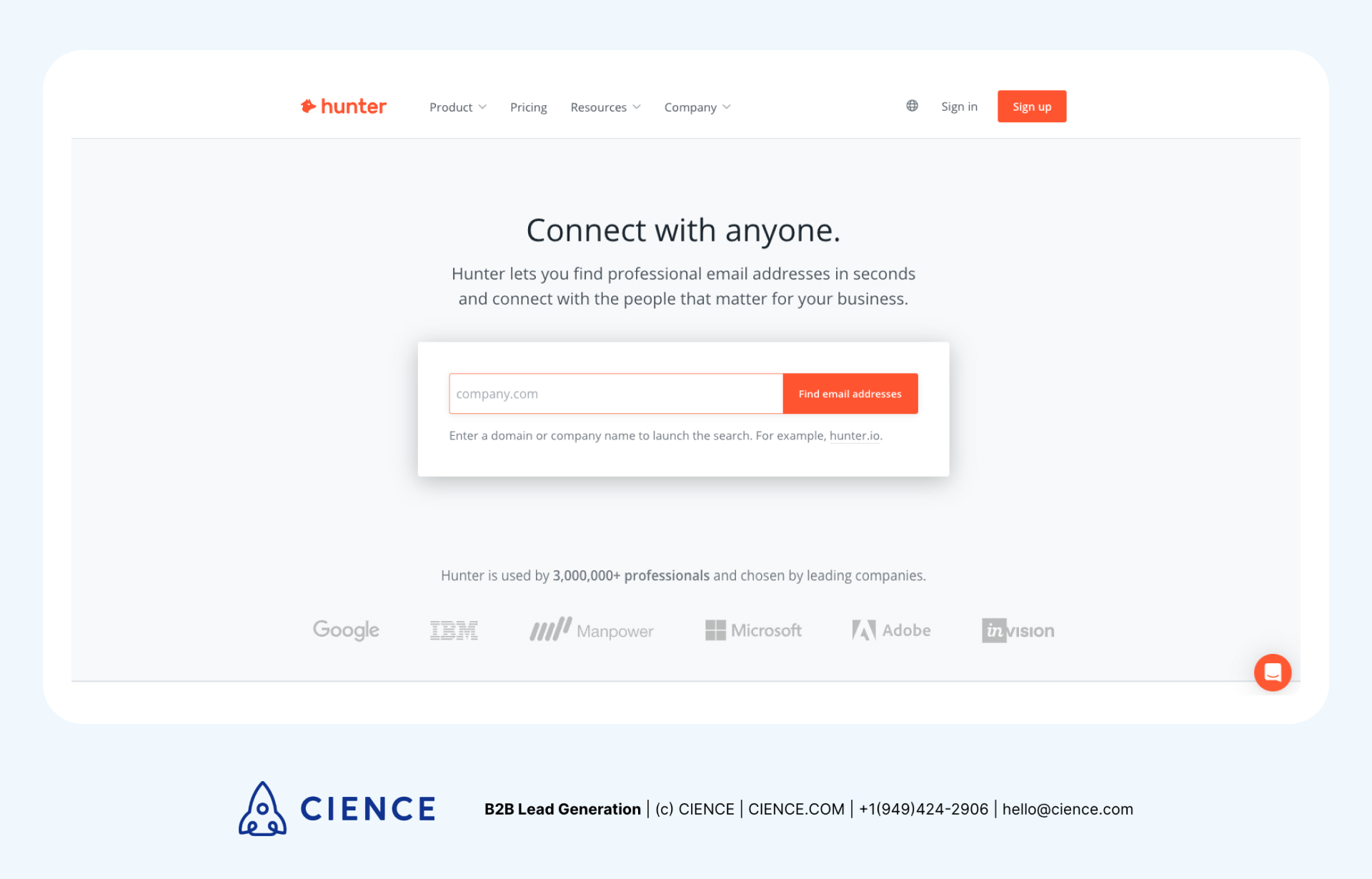
6. AeroLeads
AeroLeads is the ideal tool for B2B sales professionals. It simplifies lead scoring and prospecting using intuitive filters, real-time data validation, and automated email verification. It integrates seamlessly with your existing CRM so you can spend less time finding leads and more time closing deals.
- Pricing: $49 to $499 per month
- Free trial: Available
- CRM integration: Available
- Browser extension: Available
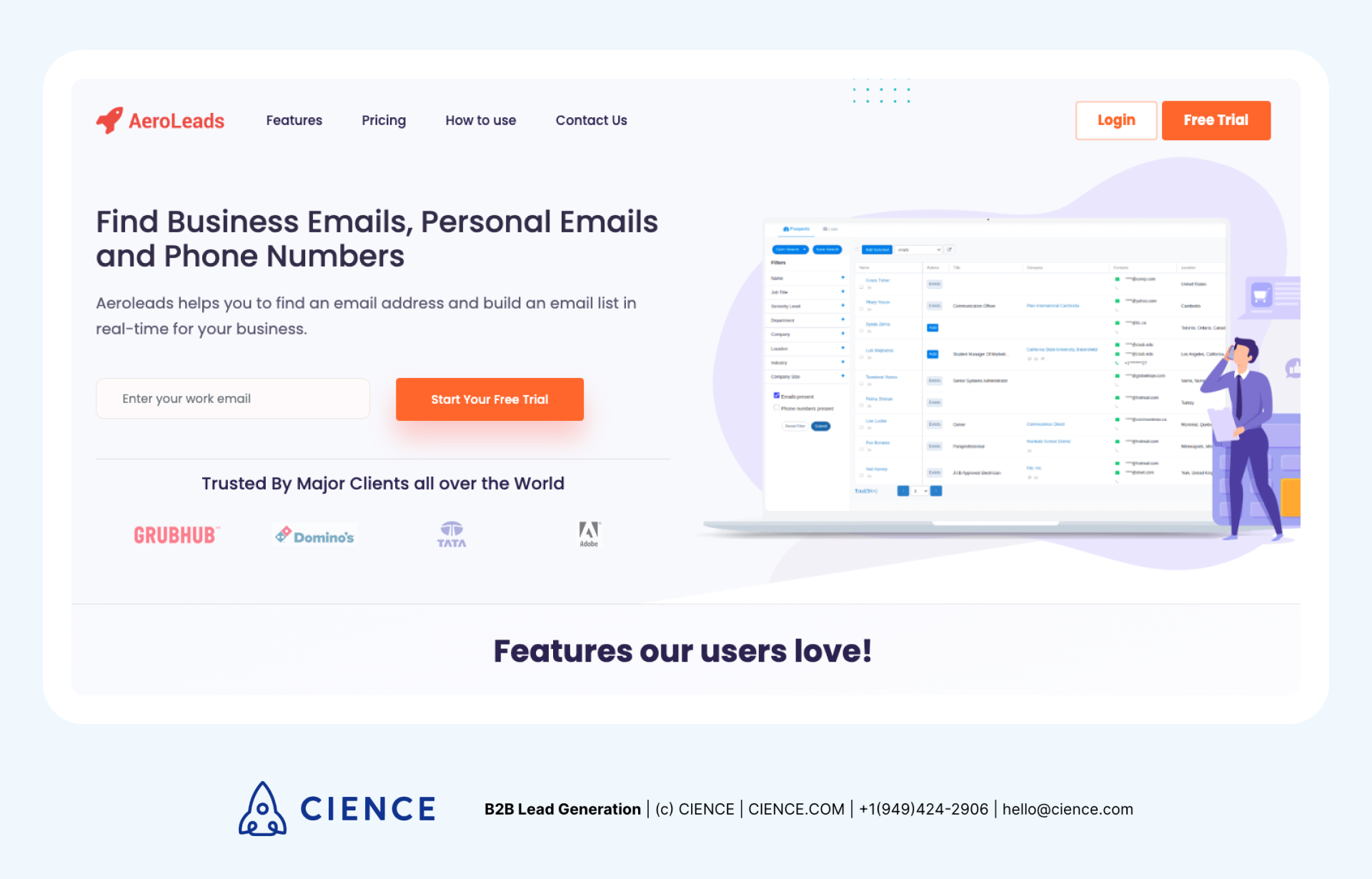
Leverage Sales Targeting Solutions
Get Better Results with Sales Targeting
Sales targeting has been a crucial element of marketing and strategy for every business, from large corporations to small local businesses. Having a better sales targeting system in place can save time and energy while also providing better results.
By implementing the strategies discussed in this article, businesses are sure to improve their sales targeting efforts and see an increase in revenue as a result. Sales targeting is an essential step toward ensuring long-term success for any business, and by understanding the importance of it and giving it proper attention, organizations are far more likely to succeed.
